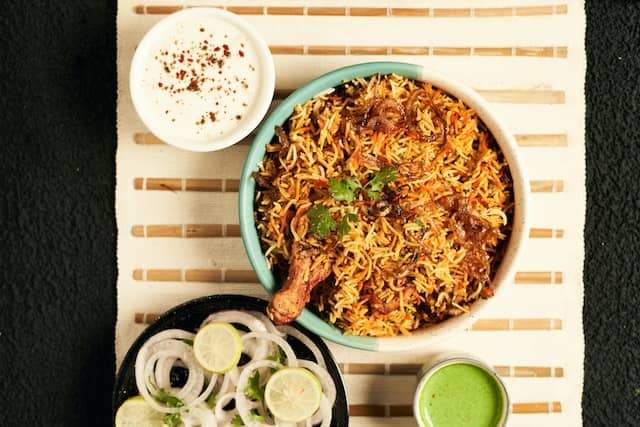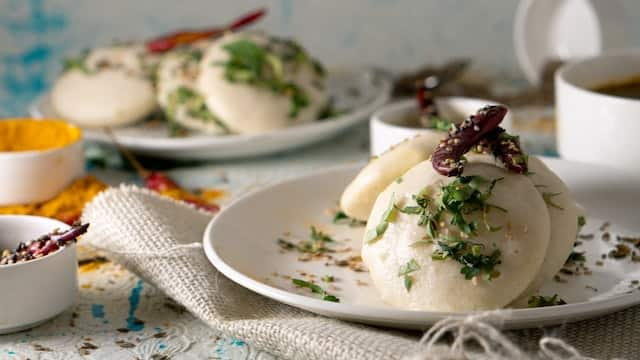Varanasi Goojha and 25 more dishes rooted in India, to try this Republic Day - Moneycontrol

Tinged with nostalgia and rooted in tradition, some dishes serve as a reminder of our rich culinary heritage. (Photo: Devon Rockola via Pexels)
Every now and then, dishes like Oreo pakoras and Gulab jamun samosas, scream for attention on Instagram feeds and disappear. The diversity of India’s culture is reflected in its cuisine, and certain dishes, tinged with nostalgia and rooted in our traditions, serve as a reminder of our rich culinary heritage.
Here are 26 such dishes:
Forgotten Dishes
Our love for Indian food may be strong, but we need to embrace these lesser-known traditional Indian recipes before we lose them:
1. Raoh ki Kheer - Ganne Ki Kheer or Rasawal, is a delicious dessert eaten on festivals and special occasions. Made with rice cooked in sugarcane juice, topped with dry fruits, it is popular in North and Central India.
2. Pathiya sekiya kukkad –A chicken dish from Granthgarh village in Punjab, which is replete with garlic flavours and fiery, with a generous use of black peppercorns. Originally cooked over ‘pathiya’ or cowdung cakes which were used as fuel, this dish is almost impossible to find today.
3. Faraa - a steamed dumpling, stuffed with dals or lentils, is also called Goojha, and is traditionally from Varanasi.
4. Padoliwali Dal – This rustic mixed dal, slow-cooked in an earthen pot called ‘padoli’, tempered with chunky onions, tomatoes, garlic and ginger, is an explosion of flavours
5. Mewa Shahi Kebab - The vegetarian equivalent of seekh kebab made with cottage cheese, khoya, yoghurt, spices and dried fruits, which emperor Aurangzeb loved, this is a melt-in-the-mouth dish.
6. Lehsun ki kheer - a winter dessert made of garlic, is known for imparting warmth apart from flavours.
 Chicken tikka (Photo: Samer Daboul via Pexels)
Chicken tikka (Photo: Samer Daboul via Pexels)
Classics
Some classic Indian dishes may be moving from cookbooks to history books, but fortunately, these are steeped in Indian-ness:
7. Dal Makhni –This creamy, slow-cooked, flavourful dal, made with whole black urad dal, originated in Peshawar, pre-Partition, as a simple kali dal. Kundan Lal Jaggi of Moti Mahal Restaurant Delhi, who hailed from Peshawar, is often credited for introducing the dal makhni version to the restaurant circuit in India.
8. Undhiyu - This Gujarati winter delicacy is made with several seasonal vegetables, resulting in a melange of textures. It gets its name from the cooking method ‘Undhu’, or upside down, and is eaten with puris on Uttarayan, the harvest festival.
9. Biryani – An aromatic rice-based dish, it is available in several variants, across regions. Originated in West Asia, traditionally, the dum pukht method, was used to prepare biryani.
 (Photo: Dhiraj Jain via Pexels)
(Photo: Dhiraj Jain via Pexels)
10. Sikandari Raan-Legend goes that when Alexander the Great, popularly known as Sikandar, defeated Pourus, he asked him how he wished to be treated. Pourus said - like a king. Alexander got a special banquet prepared where, raan (spiced leg of lamb) is believed to have been served. Marinated with citrus fruit juices, with a dash of salt and pepper, the lamb leg was then pit-roasted. Chef Manjit Singh Gill, during his ITC Hotels tenure, modified the recipe and ever since, it is a signature at Bukhara.
11. Masor Tenga –This simple, sour and tangy fish curry, cooked in a delectable tomato gravy, with delicate flavours is the pride of Assam.
12. Nalli Nihari – The debate about the origins of this epic dish, notwithstanding – either in Old Delhi in the 18th century or in the Royal kitchens of Awadh – this stew of lamb shanks, slow-cooked in a shab degh, is typically served in the mornings. Nihari comes from the word ‘Nahar’, meaning dawn. The Hyderabadi version of this dish uses the lamb bones, apart from the customary marrow.
13. Mochar Ghanto –This simple but exotic banana blossom dish, a classic in Bengali cuisine, finds mention in food historian and author Chitrita Banerji’s book, A Taste of My Life, where she recalls a meal of mochar ghanto, and elaborates on the medley of textures of this stir-fried blossom dish.
14. Gushtaba- This quintessential Kashmiri Wazwan dish, known as the ‘Dish of the Kings’, made with freshly ground Keema, is a preparation of meatballs in a thick yogurt gravy. Traditionally, Gushtaba is served last, just before the dessert.
15. Malpua - Sweetcakes called apupa were mentioned in the Vedas. Malpuas, as they are called today, were originally made with barley flour. Flattened pancakes, fried in ghee were dipped in honey. Many variations have emerged and malpuas are now made with refined flour or semolina, milk and topped with chopped almonds and pistachios and served with rabri.
16. Khichdi - originated as a salty porridge made from rice and lentils, usually without spices. It has evolved and today, the preparation and ingredients, vary in each region. The Ni’matnama was not the first historical account of khichri. Selecus, as the Infantry General to Alexander the Great, revealed that rice with pulses were extensively prepared in India, around 300 B.C.E.
17. Dal Baati Churma – This trio from Rajasthan makes for a wholesome meal, and is supposed to have reached the Mughal courts when Rani Jodha married Akbar.
18. Patoleo- A traditional Goan steamed sweet made with a paste of ground rice and a filling of jaggery and coconut in a turmeric leaf, this is a must-have on most festivals.
19. Pootharekulu – This crisp, paper sweet of Atreyapuram in Andhra Pradesh, is made of rice and coated with sugar and ghee or jaggery.
20. Litti-Chokha - This rustic and traditional dish from Bihar and Jharkhand, essentially sattu-stuffed whole wheat dough balls, is paired with chokha, a mashed relish of brinjal and tomatoes and, sometimes, potatoes.
 (Photo: Sarthak via Pexels)
(Photo: Sarthak via Pexels)
Desi Fermented Dishes
Fermentation maybe fashionable now, and Sauerkraut and Kombucha popular names today, but desi fermented foods have always been around in Indian homes.
21. Dhokla – This indigenous probiotic steamed dish from Gujarat, is prepared from the fermentation of Bengal gram and rice, where lactic acid bacteria contribute to the acidity, making it sour and thus more flavourful
22. Idli – No breakfast or snack in South India is complete without this fluffy, fermented, steamed rice and black gram dish. Paired usually with coconut chutney or sambhar, it is available across India, although its origins lie in Southern India.
23. Enduri Pitha- is a flavoured cake, from Odisha, prepared during the Prathamastami festival. A fermented batter of parboiled rice and black gram is applied onto a turmeric leaf, folded and gently steamed.
Millet-based Dishes
Long before wheat and rice became our staples, millets worked their magic in most Indian kitchens
24. Nachni-che-Satv or Ragi Satva - This traditional Ragi pudding of Goa, enjoyed at breakfast or in the evening, is tasty and nutritious
25. Bajra Khichdi - This healthy porridge made with pearl millet and green lentils, is a traditional rustic winter delicacy, mainly in Rajasthan and Haryana.
26. Jowar Bhakri - A traditional, nutritious unleavened Indian flatbread commonly prepared in most Maharashtra and North Karnataka homes paired with pulse-based curries or a chutney.from "food recipes" - Google News https://ift.tt/Ik6WguQ
via IFTTT
Comments
Post a Comment